Nissan Qashqai vs Mazda CX-30 – Differences & prices compared
Compare performance, boot space, consumption and price in one view.
Find out now: which car is the better choice for you – Nissan Qashqai or Mazda CX-30?
The Nissan Qashqai (SUV) comes with a Petrol MHEV or Full Hybrid engine and Manuel or Automatic transmission. In comparison, the Mazda CX-30 (SUV) features a Petrol MHEV engine with Manuel or Automatic transmission.
When it comes to boot capacity, the Nissan Qashqai offers 504 L, while the Mazda CX-30 provides 430 L – depending on how much space you need. If you’re looking for more power, decide whether the 190 HP of the Nissan Qashqai or the 186 HP of the Mazda CX-30 suits your needs better.
In terms of consumption, the values are 5.10 L per 100 km for the Nissan Qashqai, and 5.70 L for the Mazda CX-30.
Price-wise, the Nissan Qashqai starts at 29400 £, while the Mazda CX-30 is available from 25200 £. Compare all the details and find out which model fits your lifestyle best!
In the compact SUV segment, the Mazda CX-30 and Nissan Qashqai stand out with their distinctive qualities. The Mazda CX-30 impresses with its sporty styling and superior driving dynamics, making it a joy for those who value performance and aesthetics. In contrast, the Nissan Qashqai offers practicality and comfort, boasting advanced safety features and a spacious interior, ideal for family-oriented drivers.
Nissan Qashqai
The Nissan Qashqai stands out in the compact SUV market with its sleek design and versatile features. Its smooth ride and refined interior make it a popular choice for both city driving and weekend adventures. Advanced safety technologies and user-friendly infotainment add to its appeal, ensuring a comfortable and secure driving experience for all passengers.
details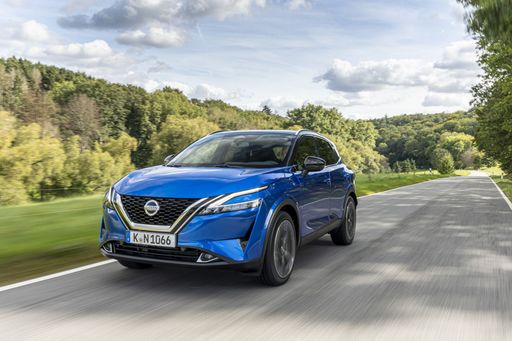 @ Nissan
@ Nissan
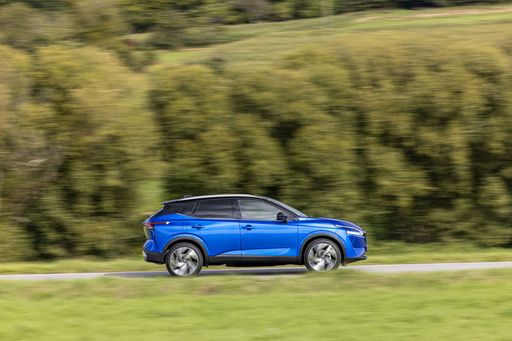 @ Nissan
@ Nissan
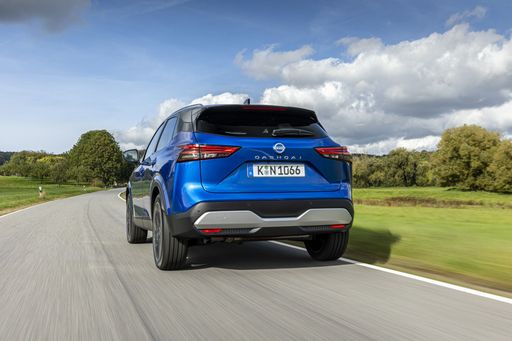 @ Nissan
@ Nissan
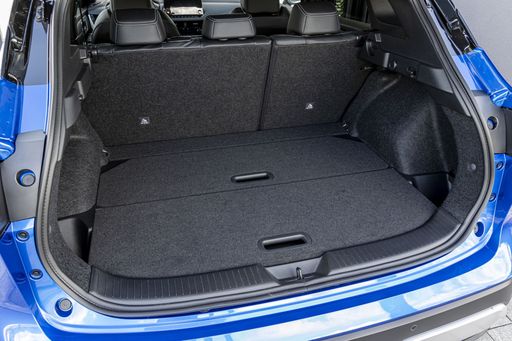 @ Nissan
@ Nissan
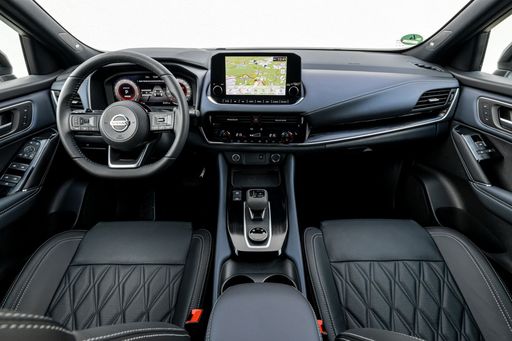 @ Nissan
@ Nissan
Mazda CX-30
The Mazda CX-30 effortlessly combines sleek design with a sense of adventure, making it an appealing choice for urban explorers and countryside enthusiasts alike. Inside, the cabin is thoughtfully designed, offering both comfort and cutting-edge technology to enhance the driving experience. Its performance on the road is agile, providing a smooth and engaging journey for drivers and passengers.
details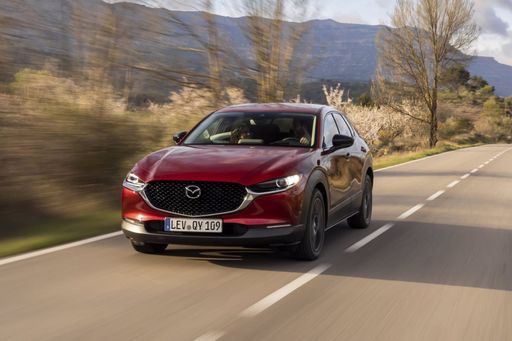 @ de.mazda-press.com
@ de.mazda-press.com
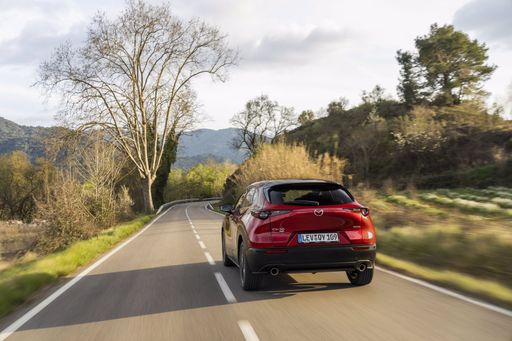 @ de.mazda-press.com
@ de.mazda-press.com
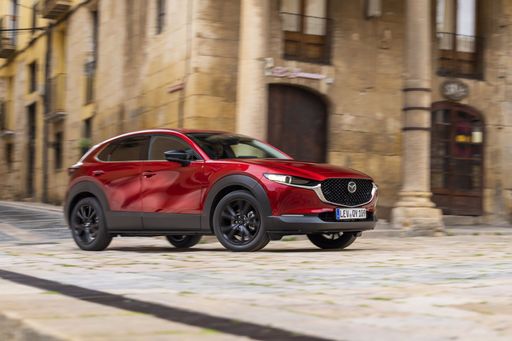 @ de.mazda-press.com
@ de.mazda-press.com
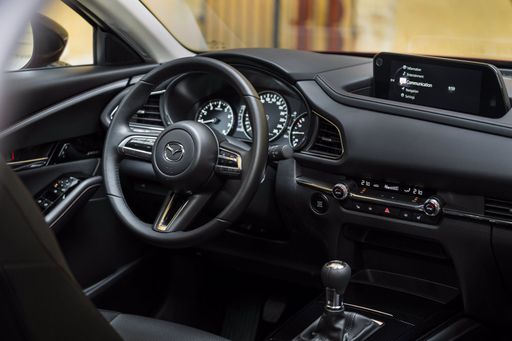 @ de.mazda-press.com
@ de.mazda-press.com
The Battle of Compact SUVs: Mazda CX-30 vs. Nissan Qashqai
In the ever-growing segment of compact SUVs, two names often stand out: the Mazda CX-30 and the Nissan Qashqai. Both vying for the same space in our driveways, these vehicles offer distinct features and innovations that cater to the modern driver. This article delves into their technicalities, to help you make an informed decision on which SUV might better fit your lifestyle.
Engine and Performance
The Mazda CX-30 offers a choice between a petrol mild hybrid system paired with either a manual or automatic gearbox. With power options of 186 HP and 140 HP, the CX-30 accelerates from 0 to 100 km/h in a time range of 8.3 to 10.3 seconds, reaching a maximum speed between 191 and 204 km/h. The engine capacity varies from 1998 to 2488 cm3, providing torque of up to 240 Nm.
Meanwhile, the Nissan Qashqai offers both petrol mild hybrid and full hybrid options. Engine power varies from 140 HP up to 190 HP. The Qashqai’s acceleration from 0 to 100 km/h ranges from 7.9 to 10.2 seconds, with a top speed between 170 and 206 km/h. Engine capacity here ranges from 1332 to 1497 cm3, boasting torque figures up to 330 Nm.
Fuel Efficiency and Emissions
Mazda has equipped the CX-30 with a fuel consumption rate ranging from 5.7 to 6.6 L/100 km, accompanied by a CO2 efficiency class categorized as D and E. The emissions range from 129 to 148 g/km, balancing performance with efficiency.
On the other hand, the Nissan Qashqai shows a consumption range between 5.1 to 6.8 L/100 km and emissions ranging from 116 to 154 g/km, with efficiency classes also in the D and E brackets.
Space and Dimensions
With a length of 4395 mm, width of 1795 mm, and height of 1540 mm, the CX-30 offers a trunk capacity of 422 to 430 liters. Its curb weight oscillates from 1455 to 1587 kg.
The Nissan Qashqai offers slightly bigger dimensions: 4425 mm length, 1835 mm width, and a height of 1625 mm. Its trunk offers 479 to 504 liters of space, and it weighs between 1420 to 1665 kg depending on the model.
Innovations and Features
The Mazda CX-30 incorporates sleek design philosophies and cutting-edge technology, ensuring that the driver remains engaged with its intuitive interior layout. The offerings in power variations cater to different driving preferences, whether it's a demanding daily routine or weekend getaways.
Conversely, the Nissan Qashqai presents innovation in the form of its hybrid technology and a range of transmission options including a CVT and reduction gearbox. The extended trunk space and efficient fuel consumption make it an attractive option for families and long-distance travelers.
Conclusion
The choice between the Mazda CX-30 and Nissan Qashqai ultimately hinges on personal priorities. If a sportier drive and slightly more compact design intrigue you, the CX-30 might be the perfect companion for your journeys. Meanwhile, the Qashqai offers superior efficiency and space, especially appealing to those with a focus on utility without compromising on innovation.
Both cars continue to lead the compact SUV market with their respective strengths, proving once again that technological advancements and practical design can coexist beautifully in the automotive world.

|

|
|
|
|
Costs and Consumption |
|
|---|---|
|
Price
29400 - 42500 £
|
Price
25200 - 36800 £
|
|
Consumption L/100km
5.1 - 6.8 L
|
Consumption L/100km
5.7 - 6.6 L
|
|
Consumption kWh/100km
-
|
Consumption kWh/100km
-
|
|
Electric Range
-
|
Electric Range
-
|
|
Battery Capacity
-
|
Battery Capacity
-
|
|
co2
116 - 154 g/km
|
co2
129 - 148 g/km
|
|
Fuel tank capacity
55 L
|
Fuel tank capacity
48 - 51 L
|
Dimensions and Body |
|
|---|---|
|
Body Type
SUV
|
Body Type
SUV
|
|
Seats
5
|
Seats
5
|
|
Doors
5
|
Doors
5
|
|
Curb weight
1420 - 1665 kg
|
Curb weight
1455 - 1587 kg
|
|
Trunk capacity
479 - 504 L
|
Trunk capacity
422 - 430 L
|
|
Length
4425 mm
|
Length
4395 mm
|
|
Width
1835 mm
|
Width
1795 mm
|
|
Height
1625 mm
|
Height
1540 mm
|
|
Payload
466 - 520 kg
|
Payload
458 - 496 kg
|
Engine and Performance |
|
|---|---|
|
Engine Type
Petrol MHEV, Full Hybrid
|
Engine Type
Petrol MHEV
|
|
Transmission
Manuel, Automatic
|
Transmission
Manuel, Automatic
|
|
Transmission Detail
Manual Gearbox
|
Transmission Detail
Manual Gearbox, Automatic Gearbox
|
|
Drive Type
Front-Wheel Drive, All-Wheel Drive
|
Drive Type
Front-Wheel Drive, All-Wheel Drive
|
|
Power HP
140 - 190 HP
|
Power HP
140 - 186 HP
|
|
Acceleration 0-100km/h
7.9 - 10.2 s
|
Acceleration 0-100km/h
8.3 - 10.3 s
|
|
Max Speed
170 - 206 km/h
|
Max Speed
191 - 204 km/h
|
|
Torque
240 - 330 Nm
|
Torque
238 - 240 Nm
|
|
Number of Cylinders
3 - 4
|
Number of Cylinders
4
|
|
Power kW
103 - 140 kW
|
Power kW
103 - 137 kW
|
|
Engine capacity
1332 - 1497 cm3
|
Engine capacity
1998 - 2488 cm3
|
General |
|
|---|---|
|
Model Year
2024
|
Model Year
2025
|
|
CO2 Efficiency Class
E, D
|
CO2 Efficiency Class
D, E
|
|
Brand
Nissan
|
Brand
Mazda
|
Nissan Qashqai
Exploring the New Nissan Qashqai: A Masterclass in Innovation and Performance
The Nissan Qashqai stands as a testament to the brand's continuous evolution in the competitive SUV market. Building on its robust reputation, the latest models bring a blend of style, efficiency, and groundbreaking technology that cater to the modern driver's needs. As we delve into the technical nuances and innovative features, it becomes evident why the Qashqai remains a top contender in its segment.
Powertrain and Efficiency: A Harmonious Balance
The latest Nissan Qashqai models feature an advanced range of powertrain options, including both mild-hybrid and full-hybrid systems. The 1.3 DIG-T MHEV engines provide power outputs ranging from 140 to 158 PS, ensuring a responsive driving experience while maintaining a remarkable fuel efficiency of 6.3 L/100km for automatic front-wheel drive versions. The full-hybrid 1.5 VC-T e-POWER delivers an impressive 190 PS while achieving a fuel efficiency of just 5.1 L/100km, demonstrating Nissan's commitment to ecological innovation.
Advanced Transmission Systems
Drivers can choose between manual or automatic transmissions, tailored to their driving style. The manual gearbox offers a tactile driving experience, while the automatic options, including a CVT and reduction gear transmission, ensure seamless power delivery and heightened efficiency. For those who seek greater traction and stability, all-wheel drive configurations are also available, enhancing the Qashqai's versatility.
High-Tech Interior: Comfort Meets Connectivity
The Qashqai's interior is a sanctuary of technology and comfort. The SUV features a user-friendly infotainment system with a touchscreen interface, compatible with both Android Auto and Apple CarPlay. The seamless integration of technology extends to advanced driver-assistance systems (ADAS) that include ProPILOT with Navi-link, enhancing convenience and safety during long drives or urban manoeuvres.
Performance and Dynamics: The Driving Experience
When it comes to performance, the Qashqai does not compromise. With acceleration from 0-100 km/h in as little as 7.9 seconds in the more powerful hybrid editions, and a top speed ranging from 170 to 206 km/h, Nissan ensures that excitement is part and parcel of the Qashqai driving experience. This balance of power and control is complemented by a well-tuned suspension system and precise steering response, providing a confident drive whether on highways or country lanes.
Design and Practicality: Where Form Meets Function
Sporting an aerodynamic silhouette, the Qashqai exudes a modern vibe that is both eye-catching and functional. Its dimensions, with a length of 4425 mm and a width of 1835 mm, provide ample cabin space for five passengers, along with a versatile boot capacity of up to 504 litres. These aspects make it an ideal choice for families and adventurers alike.
Conclusion: A Forward-Thinking Choice
The Nissan Qashqai remains a steadfast choice for those seeking an SUV that blends innovative technology with everyday practicality. With its advanced hybrid options and cutting-edge features, it not only meets but often exceeds the demands of today's environmentally conscious and tech-savvy drivers. As Nissan continues to push boundaries, the Qashqai stands as a beacon of what modern SUVs can achieve.
Mazda CX-30
The Mazda CX-30: Where Innovation Meets Efficiency
The Mazda CX-30 stands as a testament to Mazda's commitment to blending the best of technology and design. Positioned as a subcompact SUV, the CX-30 delivers the practicality of an SUV with the agile driving dynamics of a smaller vehicle. As we delve into its technical and innovative aspects, the CX-30 showcases why it's a formidable choice in today's competitive automotive market.
Engine and Performance: Power Meets Efficiency
The heart of the Mazda CX-30 lies in its sophisticated engine offerings. At its core, the e-SKYACTIV-X engines provide a unique balance of performance and fuel efficiency. With 186 PS at your disposal, these engines optimise the combustion process, reducing both fuel consumption and emissions. The engine's mild-hybrid system further enhances its efficiency by capturing energy during braking, making it one of the more environmentally conscious choices on the market.
Transmission and Drivetrain Options
Buyers have the flexibility to choose between a manual or an automatic transmission, catering to diverse driving preferences. The available all-wheel drive (AWD) system provides enhanced stability and control, particularly useful in variable weather conditions or challenging terrains. Those preferring a classic driving experience can opt for the front-wheel drive (FWD) variants, which still deliver impressive traction and handling.
Design and Dimensions
The Mazda CX-30's dimensions—4395 mm in length and 1795 mm in width—offer a spacious and comfortable interior while maintaining a sleek and modern exterior design. Its aerodynamic form not only enhances its aesthetic appeal but also contributes to improved performance and fuel efficiency. The interior, adorned with high-quality materials, reflects Mazda’s dedication to creating a premium driving experience.
Interior Comfort and Technology
Inside, the CX-30 does not disappoint. With a cabin that seats five comfortably, it strikes an excellent balance between style and practicality. The infotainment system, replete with intuitive controls and connectivity options, ensures that drivers remain connected and entertained on the go. Additionally, advanced safety features bolster the confidence of any journey, safeguarding occupants and pedestrians alike.
Pricing and Model Variants
The Mazda CX-30 is offered in a variety of model configurations, each catering to different budgetary and feature preferences. The entry-level models provide excellent value, while higher trims, such as the Exclusive-Line and Takumi, offer luxurious enhancements and additional technology features. With pricing from €28,940 to €42,390, the CX-30 positions itself as an attractive option in its segment.
Conclusion: The Ideal Mix of Performance and Practicality
In summary, the Mazda CX-30 emerges as a versatile and appealing option for those seeking a compact SUV that does not compromise on performance or sophisticated engineering. Its combination of innovative technology, efficient powertrains, and driver-centric features make it a worthy contender in its class. Whether navigating urban landscapes or exploring rural roads, the CX-30 delivers an engaging and reassuring drive.
The prices and data displayed are estimates based on German list prices and may vary by country. This information is not legally binding.
